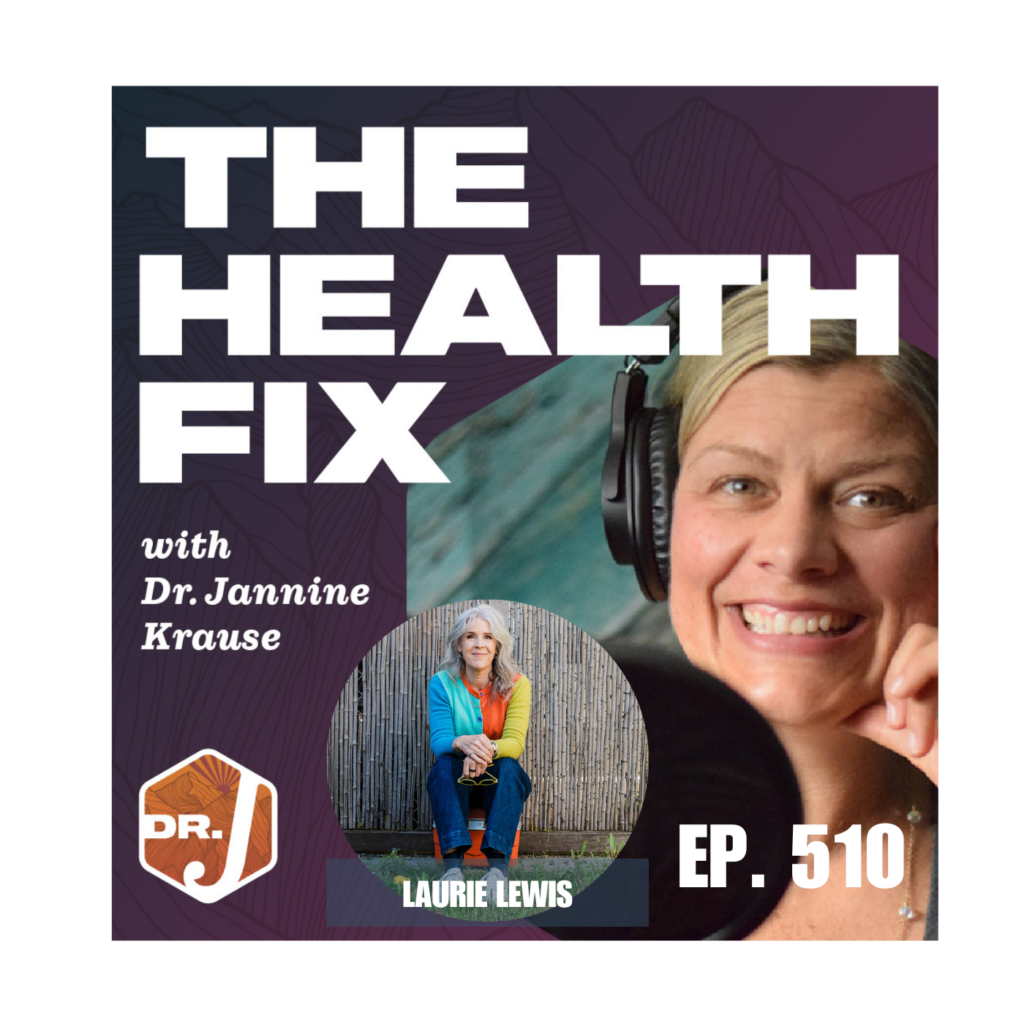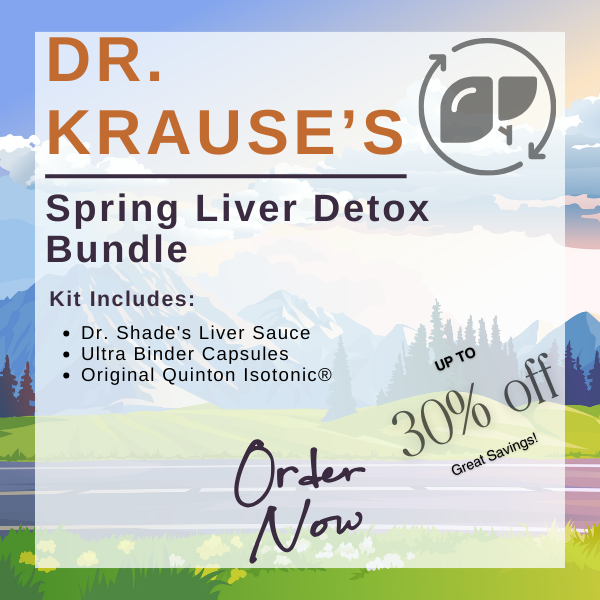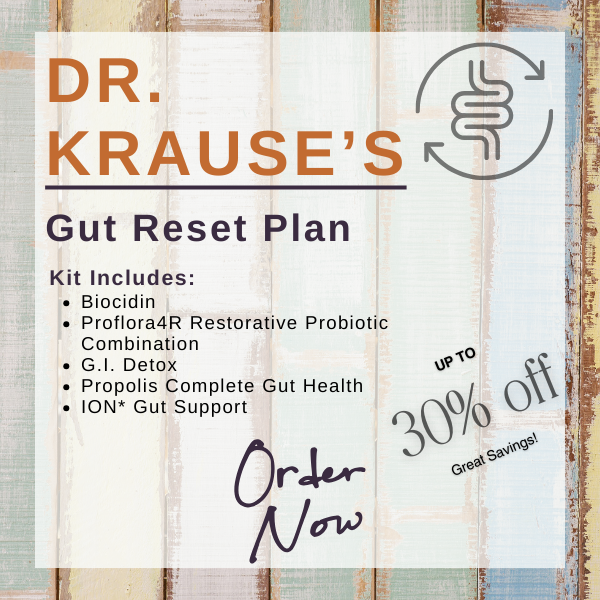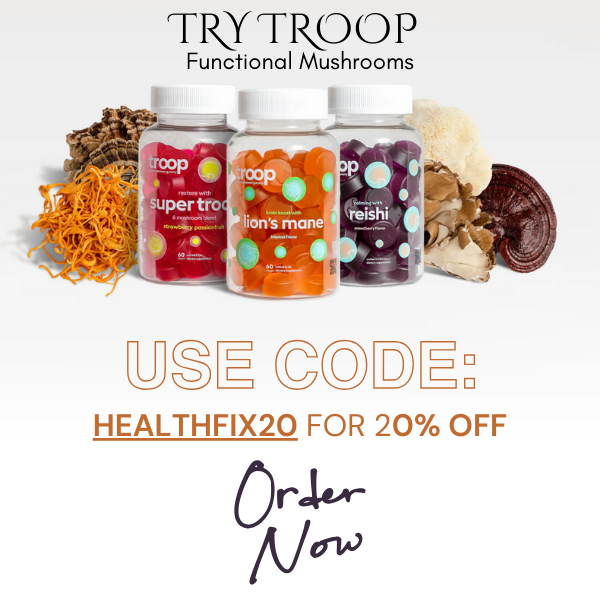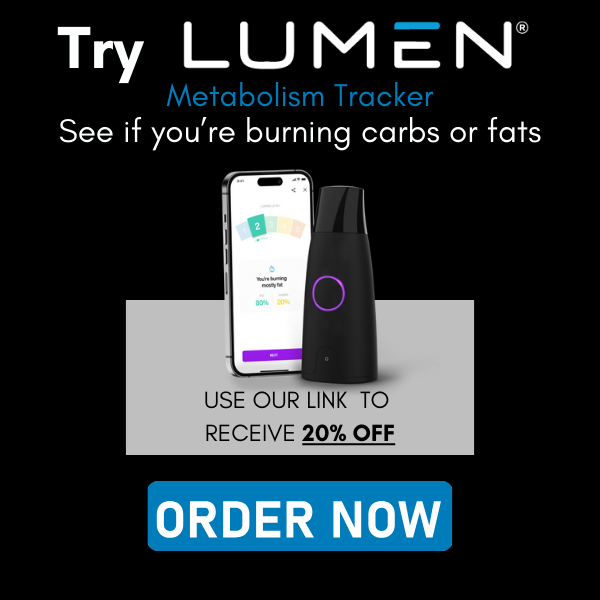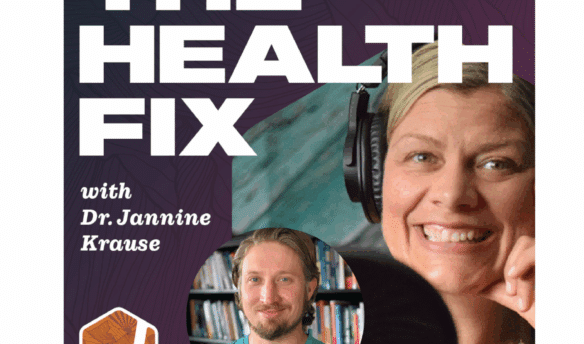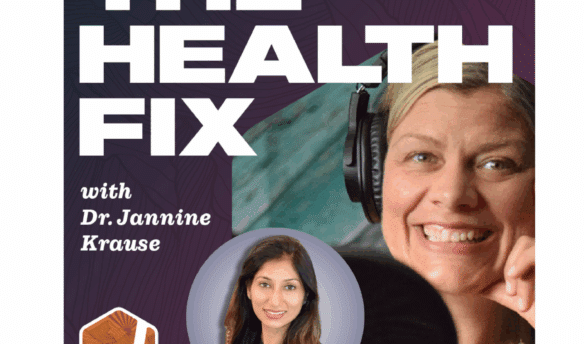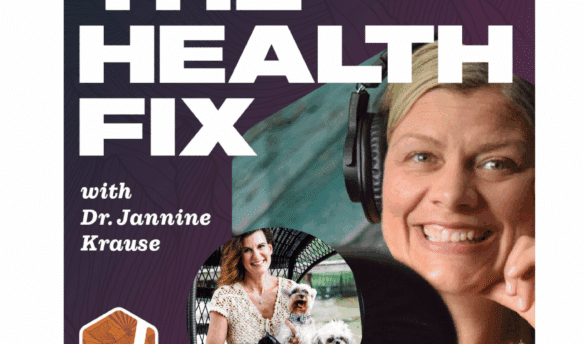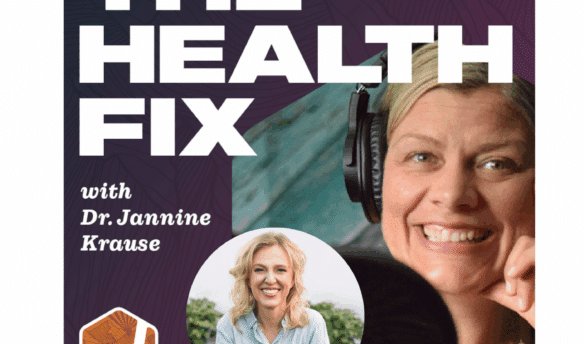In this special two-part series, we’re diving into the world of fasting and how it can be a game-changer for women over 40. Today, I’m thrilled to introduce you to Laurie Lewis—a truly inspiring guest. Laurie is 61, and just six years ago, she was struggling with a 50-pound weight gain that caught her off guard, despite being a fit and healthy eater. Like many women, she experienced this sudden change around menopause, a time when many say traditional weight management methods don’t work as well.
What drew me to Laurie was her story—she found fasting during this challenging time, and it turned everything around for her. I wanted to get her take and drill down into all things fasting. Laurie was an open book and a great sport, sharing insights that even got me rethinking my own approach to fasting!
Dr. Krause’s Protocols
Instructions Included
Traveling soon? Looking to detox or reset your gut? Try one of Dr. Krause’s Fullscript plans.
In this episode, you’ll hear Laurie’s journey and discover:
- Why fasting has to feel good, fit your lifestyle, and help you achieve your health goals.
- The benefits of changing up your eating windows to mimic ancestral eating patterns.
- How fasting can lead to wanting to improve the quality of your food.
- Why assessing how you feel (rather than just focusing on the scale) is key.
- The impact of supplements on fasting.
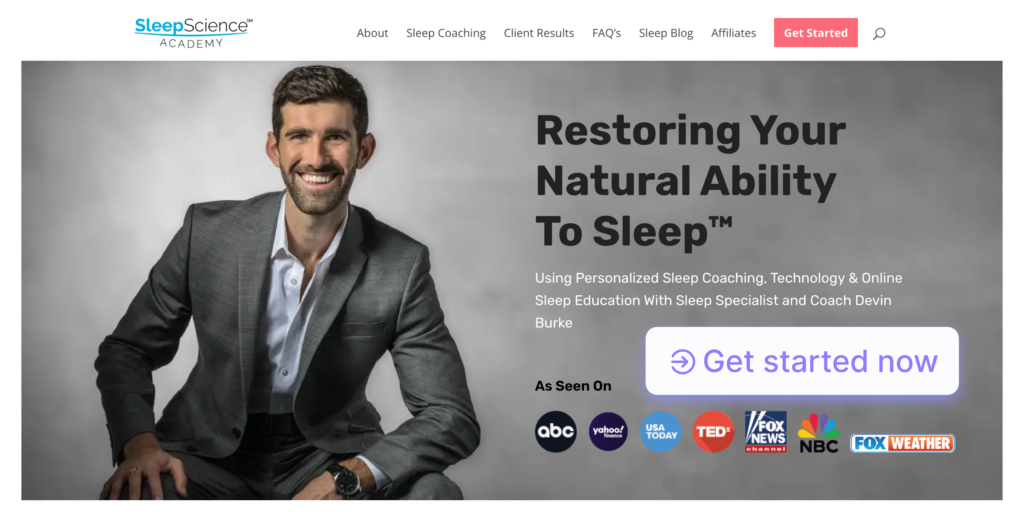
Use code DRJ10 for 10% off
We’ll explore the 2-6pm eating window that worked for Laurie, and why many women feel better when they’re not constantly eating. Plus, get ready for Part 2, where I’ll share my re-initiation into fasting and the results I experienced!
Resources From The Show:
- Visit Laurie at fastforwardwellness.com
Our Partners
Podcast Transcript
3:27 – Lauries story
8:56 – Fasting and “eating window”
12:00 – Planning ahead and staying consistent
16:13 – Determine your “gaurdrails”
22:56 – Appetite correction – How long before you lose interest in ultra processed foods?
30:09 – How much protein should you eat in your window?
38:43 – Your “dashboard”
41:59 – Fasting clean
45:46 – Fasting tips
49:17 – Where to find Laurie
[Preview] But if a person starts with fasting clean, starting gradually, discovering their favorite
eating window sweet spot, that sense of wanting to shift our food always happens.
Was healthy and fit in my early 40s and I gained 50 pounds, I was eating the way I was
eating.
50 pounds at 49 in menopause and I didn’t change anything about my food.
[Intro] Welcome to The Health Fix Podcast where health junkies get their weekly
fix of tips, tools and techniques to have limitless energy, sharp minds and fit
physiques for life.
JANNINE: Hey health junkies. On this episode of Health Fix Podcast, I’m interviewing Lori Lewis.
She has quite a story around fasting.
And I know not another fasting podcast,
but here’s the thing.
I’ve talked about fasting in terms of my own personal
experience, why I kind of have found for some people,
it’s not that great why I’ve kind of diverted folks
from doing it based on their certain needs.
Now, Laurie has an interesting story.
She’s 61 now, six years ago she gained 50 pounds.
And probably a lot of you can resonate with this.
You’ve been eating healthy for years and years.
You probably schooled some people on how to eat healthy.
And then all of a sudden around menopause,
perimenopause, the weight starts shooting up.
And you’re like, I haven’t changed a thing.
What in the world is going on?
Well, one of the biggest things that happen
as we shift hormones is we can be more insulin resistant.
And this is where fasting shines.
The caveat is how long you’re fasting, how you’re doing it, and really what Lori gets
to here and what brought me to wanting to have her on the podcast is that she’s talking
about why fasting needs to feel good.
It has to work with your life and it has to help you to reach your health goals.
There are so many people out there like, this is the way you fast.
You can’t divert from this plan.
This is what I don’t like about fasting.
So I know that I’ve given some things out there.
I’m like, I don’t really love fasting around perimenopause.
Well, what it means is I don’t love it where we’re doing it in a way that doesn’t fit our
lifestyle, but also is kind of an excuse not to eat because that’s what I ended up doing.
Anyway, we’ll hear that in the podcast.
So Lori Lewis is a specialist in fasting.
She’s done lots of education around it.
She is well versed and she even convinced me to go back to fasting and reevaluate what
I was doing and why I thought I wasn’t getting results from it.
So that’s part two of this podcast.
All right.
Well, let’s introduce you to Lori Lewis and give you a little insight of Lori and her
coaching when it comes to fasting and a realistic approach compared to a lot of things you see
out there.
All right.
Let’s get on with the podcast.
Okay.
So you’re 61 and you are hurting for about seven years of just rough life.
So give us a scoop of how things played out.
So folks can kind of understand where you were at and maybe they might resonate.
LAURIE: Good.
Okay.
So in my late 20s, I had what feels like an epiphany, you know, in hindsight, looking
back and it went kind of like this.
I think this diet coke might not be good for me.
And then I paid attention to that.
I just can’t even believe it.
And so that began my personal passion
to fuel myself well.
So I educated myself as a fun hobby.
I never wanted to be the food police,
but I learned very quickly cutting some things out,
including sugar, that I felt so much better.
And then we move quickly to age 44
when I was first starting to get the signals
that I was in Perry, menopause,
but since they don’t send us to biology class
for older women, I didn’t know that’s what it was.
I was just experiencing depression for the first time.
And people think, you know, the number one sign
that you’re in Perry, menopause,
which are the transition years, as you know,
are hot flashes, but there’s a list of a hundred things
that we experience because of the drop in estrogen.
So of course I didn’t connect the dots on all that.
And I really suffered in parry menopause for about five years.
And then when my period stopped at age 49,
which is early, as you know, not too early,
but a couple of years before the average,
I shifted into menopause, the menopause years
post-manopause and I suddenly gained 50 pounds.
Now, I was a person who was very well-versed in nutrition.
Everybody around me know me as the healthiest person they knew.
Running marathons fit and well-nourished.
And so I always say, I was healthy and fit in my early 40s.
And I gained 50 pounds.
I was eating the way I was eating.
I gained 50 pounds at 49 in menopause,
and I didn’t change anything about my food.
And I lost the 50 pounds at age 54
and didn’t change anything about my food.
Now, that’s not to say that some people should not,
you know, I think most people encourage most people
to shift what they’re eating,
upgrade the quality of their food.
But for me, my food quality was already upgraded.
And what caused the weight gain
was the hormonal chaos of menopause,
and what turned around the weight, the brain fog,
the depression, the memory loss, the aching head to toe,
the plantar fasciitis, all of it,
what turned all that around was keeping an eating window.
And I found out about intermittent fasting quite,
it felt like by accident, I thought I knew
kind of all the best practices of how a person
could take really good care of themselves.
And I knew about long-term therapeutic fasting, but I did not know that you could live your
daily life having a clean fasting hours and an eating window and turn around your health.
And that’s what I did for myself.
And then people were really paying attention and wondered how I did that.
And I’ve really enjoyed for six years now in my business, it’s called fast forward wellness,
encouraging and guiding, mostly women.
I say I help women aged 44 to forever navigate the hormonal
chaos of perimenopause and menopause and turn their health
around with intermittent fasting as the foundation.
So that’s foundational for me.
JANNINE: Yeah.
Well, I mean, it makes sense that hormones would, would, you know,
shift things wildly on us.
And, and I also hear from a lot of women that, yeah, they, they’re
eating the same, the belly’s starting to come on,
and at very different degrees,
people gain weight as if overnight.
LAURIE: Yes.
JANNINE: And that’s, I’m guessing you’ve seen that
in addition to yourself, folks that come to you as well.
LAURIE: Absolutely, and there are people who have been dealing
with weight since they were small,
and their parents put them in weight watchers at age eight,
and there are people who have not maintained
a healthy weight throughout their adult life,
or other people gained weight with childbirth,
other people didn’t and then have suddenly put weight on
in perimenopause and menopause.
So I don’t know about a woman who hits menopause
and isn’t affected somehow with many
of these symptoms of perimenopause.
They might just not realize that the effect
that that drop in estrogen has had for them.
And I’m grateful for the work that doctors like you are doing
who are experts in a woman’s body beyond fertility
and can help those of us who are 44 to forever.
And I just really enjoy explaining why keeping
an eating window is so beneficial for us
and help people in a world where people eat
and drink flavored drinks from the minute we wake up
to the minute we go to bed.
How can we be people who keep an eating window
and heal our bodies every single day
during those fasting hours.
So that’s fun for me.
JANNINE: Well, let’s talk about the eating window
because I think right now,
and obviously, like I mentioned before I hit record,
one of the biggest things out there is
don’t fast if you’re in Perry, Menopause.
Don’t fat eat a severe menopause
because it messes with your hormones.
And of course I have to figure if it’s done right, right?
And you’re mentioning the eating window.
And my like fasting gone wrong
was that I just wouldn’t eat for our like days
because food.
– Forgot about food.
So.
LAURIE: So I do believe in long-term therapeutic fasting,
if a person has a health issue
and you were under medical supervision
at a place like True North or Hippocrates,
but I feel like it’s that over restriction
that if you’re not planning your food well
and you’re not discovering
what your fasting sweet spot is.
So I guide people to address three points
when you’re discovering what your best eating window is.
One is you gotta feel, it’s gotta feel really good
’cause I think people won’t keep doing things
that don’t feel amazing.
So you wanna find the sweet spot
that has you feel amazing.
The second one is it’s gotta work with your life
and the people in it.
You know, some people feel really well
having a morning eating window,
but they like eating dinner with their family.
So it’s got to work with your commute, your fitness,
your work schedule, all of it.
Then the third element is what eating window will help you
in a therapeutic sense move the needle on the health
and weight issues that you’re facing.
So you’ve got to feel amazing,
it’s got to work with your life
and it’s got to turn around whatever health issues
you’re dealing with.
And to find that sweet spot is really fun
and it doesn’t have anything to do with deprivation.
People find, well, use myself as an example,
when I first learned about keeping an eating window,
I had 50 pounds to lose and I was hurting,
thinking, head to toe, but I felt better in three days.
So the needle didn’t move on the scale,
but I got sharper, brighter, clearer.
I just, I remember standing in my mom’s kitchen
and having the thought, “Oh, there I am.”
I felt like myself again.
And it sounds like deprivation to people.
It sounds like, “Won’t you just be so hungry
and so miserable?”
But what happens is we flip a metabolic switch
after about two to three weeks of staying consistent
with a clean fasting schedule and an eating window.
And then our body taps in to that body fat
that’s there to use as fuel.
It knows, it’s really smart.
It’s like, been waiting for the opportunity.
It’s been storing fat for all these years
and it’s been waiting for the opportunity to use it
for energy.
So–
JANNINE: Hmm.
– I see.
So if someone say had been fasting for a while
and this is kind of another thing that I hear
like a lot of questions about and kind of saw myself, I’d been fasting for a while, probably
not correctly because I would, you know, you had mentioned planning.
And sometimes with a busy life and and whatnot, you don’t plan.
So you choose not to eat because it’s easier.
LAURIE: That’s a big part of my coaching is getting people to think
ahead, when’s my eating window today?
What delicious food am I going to be eating?
And do I have two or three days worth of groceries on hand?
And practicing that, it’s, you know, the hardest thing is maintaining a positive mindset and
preparing planning, you know, changing these habits.
So I really understand what you just said.
Absolutely.
JANNINE: So there’s that.
The other big thing on this with with fasting is looking into, like you said, that that window.
And it seems that if you keep shifting the window, because I, you know, there are protocols
that have different days where you do different times.
So I’m thinking you’re saying no, stay consistent.
LAURIE: I love that question because if you,
I would love for everybody to look at this through an evolutionary perspective lens
that all through all human history,
humans have thrived and survived due to food scarcity.
We are our best, brightest, sharpest, most productive,
lot of stamina when we’re in a fasted state and our brain is sharper too. So when there was
no food, no food, no food food, no food food, no food, no food food, we didn’t know when it was
coming and human beings were shared food and ate a lot at one time and then had to go out and find
more. So if I like people to compare fasting to sleep, both are imperative, we don’t go without
sleep. We’re sleep deprived, but we don’t go without it. Same thing with fasting. It’s imperative
for us to put our bodies into this fasted state every day. With sleep, we’re on a circadian rhythm
and it’s best to have the same sleep schedule day in and day out. With fasting, you’re right.
It can be very beneficial to change up the eating window because that’s how we’re designed to not
know when the food is coming. But remember that second leg of the stool is, it’s got to work with
your life. And most people, we are in modern times on a schedule and integrating with the
people around us. And food isn’t scarce. It’s around us 24/7 in abundance. And so we can plan
the eating window that works with our lives, has us feel our best, and we can plan that food that
that we’re going to eat because we are lucky.
We have food around us.
We’re not beholden to, oh no,
there’s just these roots and berries to eat and so forth.
So to be clear in answering your question,
it’s hard for human beings to create new habits.
And we are better at creating new habits
when it’s consistent every day.
So I’ve kept a needing window every day
for seven and a half years.
It has changed from day to day, but I know my favorite eating window.
I know the eating window that has me feel my best and works with my life.
And I, and because it’s just so natural and easy, I don’t have to think about it.
I don’t, all I have to do is plan my food.
And then if something comes up and I get to change it or need to change it,
it’s no problem.
Fasting is my superpower.
I will, you know, can always take good care of myself
and feel strong and sharp and bright,
burning my own body fat for energy.
But I think most people would prefer
to be excited about the flexibility of it,
but to keep the same eating window every day.
That’s what works for most people,
especially in the beginning when you’re creating a new habit.
I encourage people to have what I call guardrails, okay?
So when we’re driving down the road,
there are guardrails that are edges,
that are fixed, that are firm, okay?
And then we’ve got the lines and then we’ve got our car.
And we’re somewhere in there, right?
We’re not hitting edges.
And so when people start,
and I would love to share the easiest way to start,
but when people start,
I encourage you to get in your mind,
this is an example, this is not the right numbers, okay?
For example, get in your mind.
I don’t eat before 11, I don’t eat past six,
something in your mind like that.
And that it would have to be really a special occasion
to shift that.
So in the beginning, you have in your mind,
I don’t eat before, that’s your guardrails.
I don’t eat before 11, I don’t eat past six.
And then somewhere in there,
you might have a six or seven hour eating window.
I’m making all that up.
Some people discover they love a three hour eating window.
Some people have, if they’re fit and have little weight
to lose and their hormones are balanced
and they don’t have a blood sugar issue.
Some people might have a 10 hour eating window.
It just depends.
But having this sense of,
I don’t eat before whatever time you decide,
and I don’t eat after whatever time you decide,
those are your guardrails.
And for the most part, you stay in there.
And that supports people feeling well
and achieving their goals.
JANNINE: Guardrails makes sense.
They totally make sense.
And you just brought up an interesting concept.
how long does that happening window?
You know, we have tons of experts saying, you know,
eight hours, some people say six hours,
some people say 12 hours.
You know, there’s so much variety out there.
How does someone really know?
It sounds like you have to guess based on, well not guess,
but intuitively see what your body responds to.
LAURIE: It is a hundred percent experiential.
So we tend to overthink things before we start something.
And we tend to feel like we need to decide in advance
what plan we’re going to do.
This is not that.
This is not a diet.
You just start.
And the way you start is you decide today
what time you’re gonna close your eating window.
So you just look at your life.
It’s like, so, Jannine, what time do you think today
you’ll stop dinner and you’ll be able to say,
that’s a fair amount of time.
I’m gonna close my eating window.
What time would it be for you?
JANNINE: Six o’clock.
(laughs)
LAURIE: That’s amazing.
So you’ll eat, you’ll check in with your body
and be like, did I get enough?
Have I eaten enough?
Is my body satisfied?
And then you will close your eating window,
drink plain water, go to sleep,
wake up tomorrow, drink plain water,
and add 12 hours.
So you’re just starting, okay?
It’s really easy to start.
You add 12 hours, that’s a circadian rhythm fast.
And at 6 a.m. since you stopped at 6 p.m.
You’re gonna ask yourself if you’re hungry
or if you want your flavored coffee the way you like it, right?
I call it candy coffee.
And if you’re like, “No, I could keep going.
“This is no big deal.
“I’ll drink water.
“I’ll have a black coffee.
“I’ll eat later.
“I’ll drink a flavored drink later.”
then you gradually increase your fasting hours,
shrink your eating window.
And that’s when you start to apply those three steps
that I said, how do you feel, what works with your life
and what’s gonna help you reach your health goals?
Now, somebody could say, it works with my life
to have a 10 to eight, 10 a.m.
to 8 p.m. eating window.
They could say, “That works with my life.
I’ll have the coffee the way I like it at 10,
then I’ll have lunch at noon,
and then I’ll have a snack at three,
and then I’ll have dinner,
and I’ll close my eating window at eight.”
Great.
You are gonna feel better if you do that.
But are you going to balance your blood sugar,
normalize your blood pressure,
lower your circulating insulin,
lower inflammation,
deal with Hashimoto’s,
burn a lot of body fat,
Probably not.
So this is where the experimenting with it over time.
And most people as we age feel better with a shorter eating window.
And so, and the one of the amazing benefits of that is when people have a shorter eating window.
We tend to very quickly upgrade the quality of our food.
We lose our taste for mediocre snack food.
And our body starts asking for nutritious food.
It’s like, come on, it’s a small eating window.
You’ve got to get some nutrients in me.
We also stop using food as entertainment.
Stop using food to soothe ourselves and eat emotionally
because when you eat later in an eating window
and something upsets you,
you gotta deal with that upset in another way
other than with food.
So it’s healthy, it creates healthy habits,
not only for our physical selves,
but for our mental wellbeing.
And then we start eating more nutritious food.
And most people, I’ve never heard any consistent
long-term intermittent faster who didn’t say
that they improved their relationship with food.
And of course with their bodies
when they had a shorter eating window
and it could feel the benefits of lowering inflammation
and burning our body fat for energy.
So it really is a win-win.
JANNINE: Sure.
I can see that.
I mean, I definitely when I first started playing
with that lost a decent amount of weight,
I mean, I shouldn’t say decent.
Like I’ve only really ever been to 20 pounds overweight
and here given here and there, you know, any part,
but for me, that’s a, you know, a decent amount.
LAURIE: It sure is.
JANNINE: Yeah, yeah.
However, what I’ve also seen with folks,
and this is something that I’m hearing you say,
like you want, over time you up level,
your foods that you are looking at.
Now I have some folks who have heard different folks
talk about fasting that you can eat whatever you want.
You can have whatever you want
as long as you eat within the fasting window.
LAURIE: Correct.
JANNINE: How long does it take
before you actually want to up level then
when you’re doing it.
LAURIE: Exactly.
That is the right question.
(laughs)
Okay, so yes, I really believe,
and again, practicing with so many people over the years
that when we start, we focus on one thing,
fast clean, have plain water,
plain black coffee, plain black bitter,
black or green tea,
fast clean, shrink your eating window gradually, okay?
and settle into the eating window
that feels really good to you right now
and just keep doing that.
This idea of appetite correction
was coined by Dr. Bert Herring,
who’s a metabolism expert.
And appetite correction is twofold.
It’s actually the, we have an apostat
and appetite center in our brain.
And when we’re fasting clean every day
and having an eating window, it starts working.
And what it’s doing is it’s telling us how much to eat today
and what to eat.
So wild animals know what to eat
and they know when they’re satisfied, they stop.
They can, I saw two cheetah in South Africa,
chase down an impala and eat, catch their dinner
and sit there and eat their dinner.
And they walked away from a half eaten animal
because they knew they were done.
They had enough and then the buzzer’s flew in
and got their share.
But it was right there, this incredible example
that wild animals do know how to regulate what they eat
and how much they eat.
So do we.
And I have seen people as quickly as one month
lose their taste for ultra processed food
and their body starts telling them,
“Agg, salmon, blueberries, you know, Greek yogurt.”
And then other people, it starts to kick in
when maybe after a few months,
they’ll go to their favorite restaurant
and be all ready to order like what it is
they used to always order.
And their body’s like, yeah, no.
And they’re like, who am I?
This is my favorite food.
And their body is basically saying, not anymore.
And then other people do continue with eating the foods
that are convenient for them.
And at some point they might still be dealing
with a health issue, with some aspect of prediabetes
or weight loss resistance or their high circulating insulin
or whatever it is.
And at that point, their own curiosity says,
I wonder if it’s time for me to change my food.
I wonder if changing my food will make a difference.
And these people at that point are usually saying,
I feel so well intermittent fasting
and keeping an eating window,
I will never stop doing this, but I still have these health issues to address like
fatty liver or, you know, too much visceral fat around the organs.
And but if a person starts with fasting clean, starting gradually discovering their favorite
eating windows sweet spot, that that sense of wanting to shift our food always happens.
And then people say, “I cannot believe it.”
If you had told me a year ago that I would have liked
Brussels sprouts and wouldn’t be eating ice cream sandwiches all night,
or whatever people should.
They wouldn’t believe it.
And that’s another reason why we say in the beginning,
“Have a eating window and eat normally.”
Whatever you normally eat, because changing food is really emotional for people.
And having an eating window will start to shift what your body is asking for.
And I always say this isn’t a diet, it’s a quiet, because in that quiet, in that space of a clearer
discernment, our body can get us the messages that’s been trying so hard to do.
That it hasn’t been able to communicate through the fog of constant eating.
[Advertisement] Hey, health junkies, struggling with sleep. As a former insomniac, I can relate.
Devin Burke is a pal of mine. He has the Sleep Science Academy. He’s been on my podcast twice,
and we’ve talked a lot about how to work on sleep naturally without supplements, without
medications. Devin’s program really does work with you to help you understand what is going on
in your brain and body when it comes to sleep. And as a listener of the Health Fix podcast,
He’s given us a code for 10% off of his program, DRJ10. So if you’re interested, use that. I highly
recommend his program. So let’s get back to the podcast.
JANNINE: Yeah, that makes sense. That makes sense.
I mean, I definitely am a huge supporter of taking time between dinner and breakfast, right?
LAURIE: Yeah.
JANNINE: We have to do that. I feel like we do everyone does better in that department.
But being able to discern what’s best for you, I think that’s a good approach because
You know, there are a lot of folks out there saying you have to do this timeframe or this timeframe and you’re giving that’s what worked for them, but ultimately, fine it works for you.
LAURIE: Exactly.
I would very much shy away from any expert who says there’s a right eating window.
Now, I have found so that same Dr. Bert Herring wrote a book called the fast five with his wife, who’s an MD and he’s a PhD.
And they together discovered that having a five hour eating window and fasting 19 hours a day
worked great for them. So he shows in that book that this five hour eating window you can eat
to satiety and get all the nutrients you need and then your body’s burning your own body fat.
But then other people are advocates for alternate daily alternate day fasting which could be a
you know 36 12 schedule where you fast for 36 hours and then eat two or three meals in the
course of what we call an update. I mean, a lot of experts have found their favorite eating window
and somehow think that applies for everyone. And it doesn’t. So what you got to do is start today,
close your eating window, drink plain water, have a black coffee tomorrow morning,
and open your, you know, and shrink, start shrinking that eating window. I think people can get to
a 16/8. So fasting 16 hours, you’re asleep for half of that.
Fasting 16 hours and having an eight hour eating window. Usually within 10 to 14 days.
And then I would settle in there and see if you want to shrink it or stay there or move it earlier
or move it later. Makes sense.
JANNINE: Makes sense. Now a lot of people will are, and myself include,
because I have seen for a lot of women muscle loss is a big factor at a certain age. And you’re
mentioning you get all your nutrients in. And of course, we’re talking about keeping muscle on.
LAURIE: Yes.
JANNINE: How would someone go about, you know, are you having, are you recommending certain amounts of
protein? Are you having folks just feel it out? Same thing? How do you do it?
LAURIE: So once a person has discovered their favorite sweet spot eating window and they are settled in
there. Then as I indicated, your own body starts expressing a curiosity for different types of food
and almost immediately your body is telling you, I want more food today, I want less food today,
and you’re just always eating too satiety that feeling of, “I’m satisfied. You check in with
your body and you’re like, do I need anything more?” And the body’s like, “Nope.” Or, “Yeah, I’m hungry
eat more. And so that idea of eating to satiety is really important. And then following your
innate curiosity for what to eat. And then regarding what to eat to, for optimum, to
optimize your nutrition and strength, what I do is I coach people to start to identify
their foods in four categories. The first one is your trigger foods, foods that set you off that
you start, you can’t stop eating or you start eating potato chips and suddenly you want ice cream,
you know, everybody pretty much knows their trigger foods for sure. The second category is
foods that make you feel poorly. Most people are not tuned into that and that’s another aspect of
intermittent fasting that’s beneficial because we start to really notice what foods our body does
not want us to have that affect us negatively. It could be anything from garlic to dairy,
it could be anything. And so start tuning into the foods that make you feel poorly, which means
gassy, petite, achy, puffy, you know, moody. Then the third category for me are the foods that
you eat when you’re rushed and exhausted, like a bowl of popcorn and you call it dinner. That’s
not dinner. It’s a bowl of office entertainment food. And so what do you throw an energy bar in
your bag and call it lunch? It’s like, okay, what are those foods? Rush-done-exhausted foods,
I call them. And then the fourth category are the foods you love that love you back. And we are
building that list. And then we’re looking ahead at when’s your eating window today,
and what delicious foods are you going to eat when you open your eating window?
And then what are you going to have for your second meal or appetizer or what have you?
Now, the thing that people don’t consider regarding intermittent fasting and when they make those
food requirements is when we are fasting and we’re fat adapted, we are tapping into our own body’s
energy for fuel. So those requirements are no longer apply in those same numbers. The other thing
is when we’re in a fasted state, we are cranking up the human growth hormone production, which is
really amazing. And if you’re working out, also it’s really cranking it up. The other thing is,
In tandem with the fat burning is a phenomenon called autophagy, which is a deep cellular cleanup.
We’ve got old junky proteins in every cell that our body when we’re in a fast state is digging in
and upcycling and reusing them. So we’ve got all those building blocks and all that fuel
already on board. Now to circle back to your question, do you just kind of feel it out? Well,
I’ve got that process of identifying what’s making a person feel awful, what’s making a person feel well,
avoiding the things that I guess feel awful, planning our meals, keeping that eating windows
sweet spot, and the thing to maintain muscle and avoid muscle loss is picking up heavy objects.
So I’ve got a client after client who are in their 50s, 60s, and even thinking of someone in
her mid 70s, who are doing strength training consistently, burning body fat, losing weight,
having body recomposition, turning around their lab work, whatever health markers we’re concerning,
and maintaining their muscle mass as they’re losing weight and losing body fat. So the numbers
are they, I’m myself included, you know?
I’m strong, I’m fit, I’m working very hard as, you know, as we age, we lose muscle pretty
quickly as women in menopause, and I work really hard to maintain that.
And intermittent fasting is actually helping with that as opposed to being a hindrance
or a detriment.
JANNINE: Okay.
Yeah.
You see, yes, there’s a lot of folks out there who are also talking about, you know,
of more of a weightlifting regimen where you’re eating three, four times a day with higher amounts
of protein there. I have not found that, I mean, unless somebody’s in a bodybuilding competition,
which I’m not, but I am my BMI, I’m my weight, and my body fat percentage and so forth are in a
healthy range. I work out hard in the morning. I have a late afternoon eating window. So I’m
I’m working out in a fasted state, maybe 10, 11, 12, 13 hours fasted. And then I continue with
my morning and my day in a fasted state because I’ve cranked up the fat burning and with no
adverse effects. Like I wouldn’t do it if I felt poorly or I wouldn’t do it if it felt like it
was causing me a problem. I’d come up with another solution. And so again, I have clients who
to work out in the morning.
I can think of any number of varieties
of workout schedule and eating window schedule.
And together, we figure out what has the person
feel their best and works with their life
and helps them reach their goals.
JANNINE: Makes sense.
Makes sense.
Yeah, I think a lot of, I mean,
I’m just kind of going through all the things I hear, right?
And the other big ones with weightlifting is cardio
and you need more carbs with cardio
and you shouldn’t be trying to do too much cardio fasted
or shouldn’t weight left fasted.
You know, I do it all the time.
So it’s not like something that in my world
that I know you can, but what have you seen with some folks?
I think one of the things that I’d like to hear from you
because you see people get successful with fasting.
I’d like to hear what kind of things people have tried
before where they weren’t getting success
and maybe a couple stories of things.
LAURIE: Oh, I think the thing that has people not have success
is either over fasting and having too short
of an eating window, like thinking it’s a good idea
to do a 23-1 every single day
and have a quick play to food, close their eating window.
Now, for some people though who are just starting up,
that can get them into being fat adapted very quickly.
If someone loves doing 23-1,
then my coaching would be once a week you do a 16, eight,
have two meals in an eight hour eating window,
have a nice big metabolic boost day.
So it,
for each person,
there is a discovery and experimentation of,
again, what’s gonna have you feel your best,
what’s gonna work with your life,
and what’s gonna help you reach your goals.
And if we discover an eating window
a fasting schedule that does the first two feels good and works with their daily schedule.
But they’re not seeing that change in their LDL cholesterol or whatever their health goal
was, are we seeing that move? And sometimes the scale doesn’t move because people are
building muscle and body-rump recomposition is happening. I think of my own weight loss
experience with intermittent fasting, losing 51 pounds in 15 months.
And I went for five months without losing a pound on the scale.
Now, why would I keep going if it seemed like it wasn’t working?
I lost, I got two sizes, clothing sizes, smaller during that same timeframe
that the scale wasn’t moving.
So I think, and precisely, I would say the thing to do is to have more that
you’re measuring other than the scale.
And I call that your dashboard.
The number one most important thing on your dashboard
is how do you feel?
People are like, I’m sleeping better.
I have no more brain fog,
I make eggs and paints are gone.
Like I have energy throughout the day,
I don’t have to take a nap anymore.
Like how do you feel?
And then we include the scale, a waste measurement,
a fit of clothing, something on your lab work,
perhaps a strength marker,
like how long can you hold a forearm,
blank and then see that improved.
So we’ve got to have a lot of things on the dashboard
so that when someone says,
“I’m putting forth so much effort here, it’s not working.”
We look at if anything’s changing, it’s working.
And then do you want to have more therapeutic approach?
Do you want to, are you at the point
where you’re curious about reducing sugar
and reducing that, stop eating that box of crackers
that you’re eating while you’re making dinner?
You know, we really dig into different habits
that people have that they might not realize right now
are detrimental to them reaching their goals,
but fasting clean and having an eating window
seems to me to be the easiest, most effective way
for a person to feel better, turn inflammation around,
normalize balance their hormones,
having their hormones work well together.
We have over 80 hormones.
Usually when people talk about our hormones,
they’re only thinking about three or four of them,
but we have a network, a hierarchy of little chemical messengers,
and they want to do their job well,
and they want to communicate well with each other,
and fasting helps with that.
And insulin, in my book,
is the most important one we can affect,
and lowering cortisol,
and helping our body create estrogen
after our ovaries stop making it.
And so, it’s very enthusiastic about envisioning
how well people could feel when they start this.
JANNINE: Well, I think your approach is a good thing
because you’ve got people looking at it individually
versus follow this particular plan.
And it is hard to lose weight as you get to a certain age.
It is.
And I see many people myself included, you know,
being stuck at certain pound weights for a very long time
and getting frustrated very easily when things aren’t changing.
LAURIE: That’s right.
But first place to check though, you know, if someone says, people, I hear a lot, people
are like, I tried that, it didn’t work for me.
I love hearing that because then if they’re willing to have me ask them some questions,
what I would ask is, how long did you try it for?
Sometimes like even journalists, they’re like, I tried that intermittent fasting, it didn’t
work.
Well, they only did it for 10 or 14 days.
They didn’t even get to the good part, right?
So how long did you try it for?
What was your protocol?
When was your eating window?
How long was it?
And then the most important question is, where are you fasting clean?
Like where are you actually fasting?
Or were you taking in food flavors and nutrients?
People are like, but lemon in the water, lemon’s so good for you, or lemon helps me make it
through the tough hours.
It’s like that lemon flavor, that food flavor, you know, could be coconut or cucumber or
anything.
the system and sends the communication to the body that food is incoming. So we don’t want any
food flavors or any nutrients because we want to put the body into a complete digestive rest
and save the flavor party. So Jim Stevens who wrote Fast Feast Repeat is an amazing
intermittent fasting expert and she always says, “Save the flavor party for later. Save the flavor
party for your eating window. Fasting should be exciting. Fasting’s kind of boring. You can
You can just get it off your mind.
You’re going to feel better.
You go about your life and you eat later
and you’re eating window.
And so fasting clean,
it sounds like it’s quite strict.
I always said, I didn’t want to be the food police,
but I’m very happy now to be the clean fasting police.
And then everything else is your choice.
What you eat, when you eat, when you work out,
all of it is your choice.
Just fast clean, it makes fasting easier.
and we get all the healing, all the health benefits,
all the fat burning.
JANNINE: That makes sense.
I think I’ve even had a couple of questions
about that over the course of time of dirty fast versus
clean fast in terms of supplements,
LAURIE: Yeah.
JANNINE: Higher medication, all those things.
LAURIE: Oh, I’ll address, okay.
So I’ll rattle through what the clean fast is,
plain unflavored water, plain unflavored black coffee,
Plain unflavored, bitter, black or green tea,
not with anything added, no flavorings,
it should say green tea leaves, black tea leaves.
Then plain or unflavored minerals or electrolytes.
So if you have a magnesium that is,
I like a brand called bi-optimizers,
’cause it has seven types of magnesium
and no added ingredients.
It’s just the magnesium.
And sodium, you can put a little salt under your tongue
if you feel a little woozy for a second.
So, plain water, plain black coffee,
plain bitter black or green tea, plain minerals,
and your medication as prescribed.
So, a person should absolutely take their medication
at the time that their pharmacist says they should,
and if you need to take your medication with food,
move your eating window to that time,
and take your supplements in your eating window
because those supplements are food, you know, B12 and vitamin C
and D is fat soluble, it has to be taken with food anyway.
And so have your supplements in your eating window
and enjoy your food.
JANNINE: Fair enough.
LAURIE: It’s better, it actually makes fasting easier
because just imagine when you take in that lemon water,
the tongue and the whole digestive tract are like,
Foods and coming, foods and coming.
And the body prepares itself to receive the food.
Except you think you’re fasting and it gets grumpy
because it’s like where the heck’s the food
you just tempted me with.
So if you just fast clean, keep the system calm
in a full healing repair state, it makes fasting easier.
I know that’s counterintuitive, but it’s true.
And enjoy your food later in your eating window
of your choice.
JANNINE: Makes sense. Now, before we wrap up, I’m curious, are there any other little fasting
like tidbits or I don’t like the word hacks, but something of that nature that
you found like little insights for folks that can be really helpful to move the
needle a little bit better if someone’s really struggling with it?
Yes, I’m with you about the word hacks.
I’m like, if there’s something, some thing like trickery in it.
And it’s like, okay, so what I’m talking about too,
are let’s work with the body as it’s designed.
We’re not hacking it.
You know, fasting isn’t a hack.
It’s like like sleep, we got to do it, we just didn’t know.
And then what are some habits, some tips,
some tricks that we can employ to make the whole experience
either easier or more effective and sustainable?
Because when you feel so well
and you’re achieving your goals,
you really do want to keep going.
And so I absolutely feel like one of the hindrances
for people eating healthy food,
like real whole actual food, vegetables, fruits, meat,
fish, you know, food that you recognize it as food
is that people feel like, especially with fruits
and vegetables that when they buy a lot,
they always say, oh, all those greens,
they go bad in the back of my fridge.
I really recommend putting in your calendar
what you’re gonna be eating over the next two or three days.
You fly into that grocery store
and you do not push the cart up and down
every aisle going, “That’s good, this is on sale.”
You go in, you get the real whole food
that you’ve discovered, you love, that loves you back
and you only buy that and you eat that for the next two days.
The other, so the planning is really important
and I appreciate that you brought that up
in the beginning.
The other thing is that in your eating window,
every time you eat, you stop, you sit.
We all need a break anyway.
You put some food on a plate.
It could be a little plate, it could be a big plate,
whatever you want.
And you sit and you savor and appreciate and taste
and enjoy that food.
And you eat until, and this is a learning,
a discovery for people,
what does feeling satisfied feel like?
And then you stop, even if you’re like,
but I didn’t finish it all.
It’s like, fine, put a lid on it, put it back in the fridge.
And then that you pause in between your eating occasions,
the times that you eat, right?
So you could eat it, 10th, you could eat it,
one, you could eat it, five,
anytime you choose to eat, causing between.
And what the benefit of that is,
is that brings insulin down,
which again, normalizes our blood sugar.
And it gets us out of that habit of emotional eating,
that whatever challenges we’re facing,
that in the moment we feel we can resolve with food,
we learn other ways.
So plan your meals and plan your grocery shopping
and eat to satiety, pause, eat again, close your window.
JANNINE: Sounds like a plan, sounds like a plan.
Well, Laurie , lots of good stuff.
You went through all my questions
that I think I get the most on the fasting.
And of course, I think it’s a good time to tell folks
about your website fast forward.
Wellness your programs, all the things.
LAURIE: Yes, I love my work.
I coach people one-on-one.
I also, men and women, one-on-one,
but my group programs are for women.
I say age 44 to forever,
but I coach a lot of late women in their late 30s.
And early, these actually,
I’m thinking of three clients in their 20s.
So, ageless, customized, and I started my signature program
when I started it.
This will be my seventh year.
Little did I know that this would turn
into my full-time occupation.
My first class was in the holidays.
I started right before Thanksgiving,
taught everybody how to have an eating window.
Everybody makes it through the whole holiday season,
eating the festive foods that you love,
having an eating window,
never having to diet again in January,
never having to die it again, period ever.
And realizing that we sleep better, we feel alert,
we’re much more patient, enthusiastic energetic people
when we are aware of when we’re eating.
And I know it sounds too good to be true,
but I love having people with me through the holidays
that’ll start at the end of October this year.
And anytime someone wants to work with me
or learn more about how to keep anything window
and be consistent with that and feel better.
I have a membership, I have coach people in a one,
like I said.
So my website’s fast forward wellness,
and I love hearing from people.
If you started, and you’re,
I just, I’m thinking of someone a few months ago
who wrote me and introduced herself,
and she said she heard me on a podcast
and she started that very same day
and she feels so much better and her life is so much better.
So I like hearing from people.
JANNINE: That’s awesome.
Yeah, it’s so good to hear when you’ve inspired somebody
just listening on a podcast.
So that’s of course what we aim to do here
because ultimately, you know, health is an exploration
and I’m always happy to have folks really explore
what works best for them.
So Lori, thanks again for coming on.
I really appreciate it.
LAURIE: Thank you, Jannine.
Really fun.
[Outro] Hey fellow health junkie.
Thanks for listening to the Health Fix podcast.
If you enjoy tuning in, please help support me to get the word out about the podcast.
Subscribe, rate, and review, and just get that word out.
Thanks again for listening.
(upbeat music)
